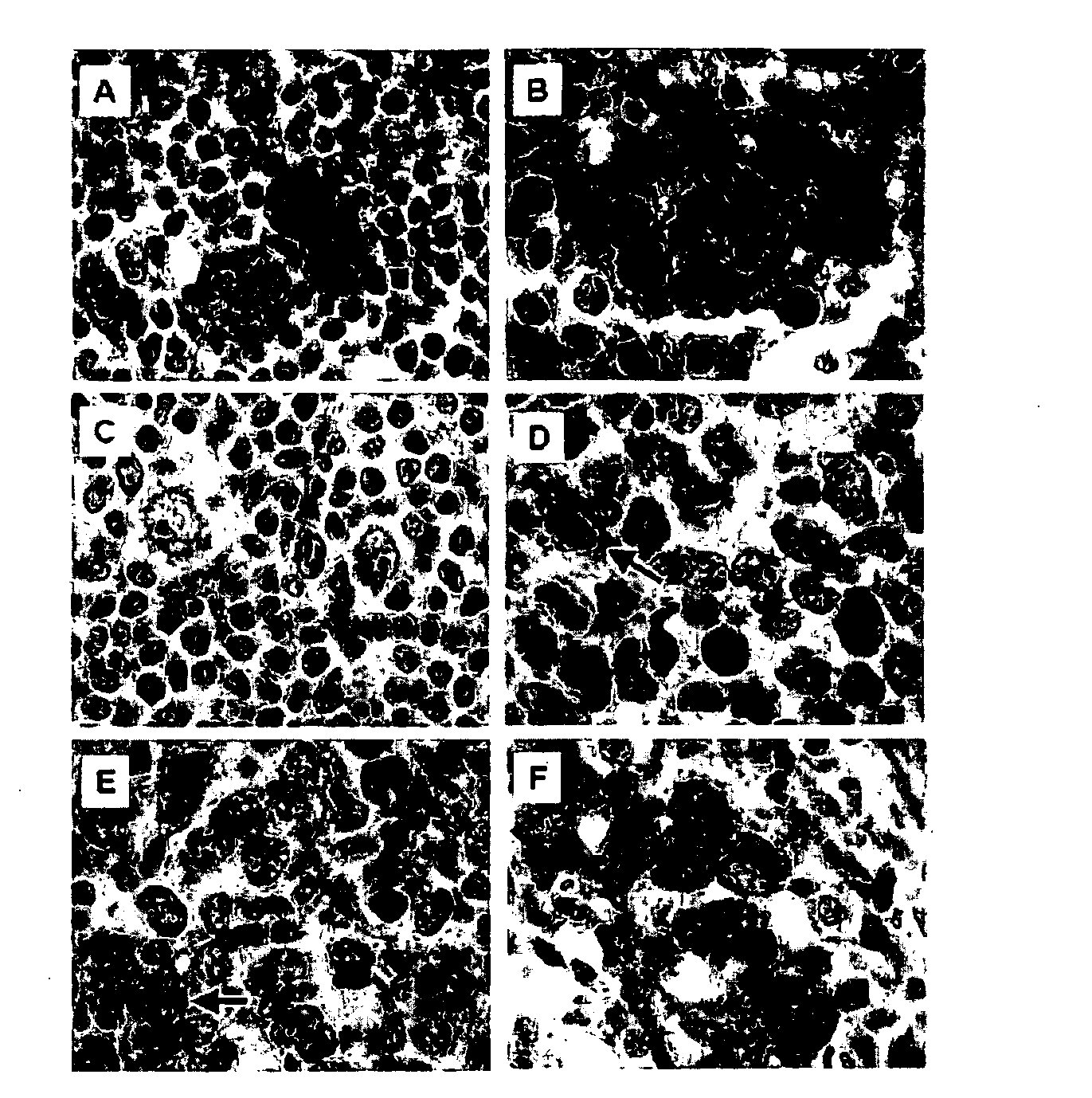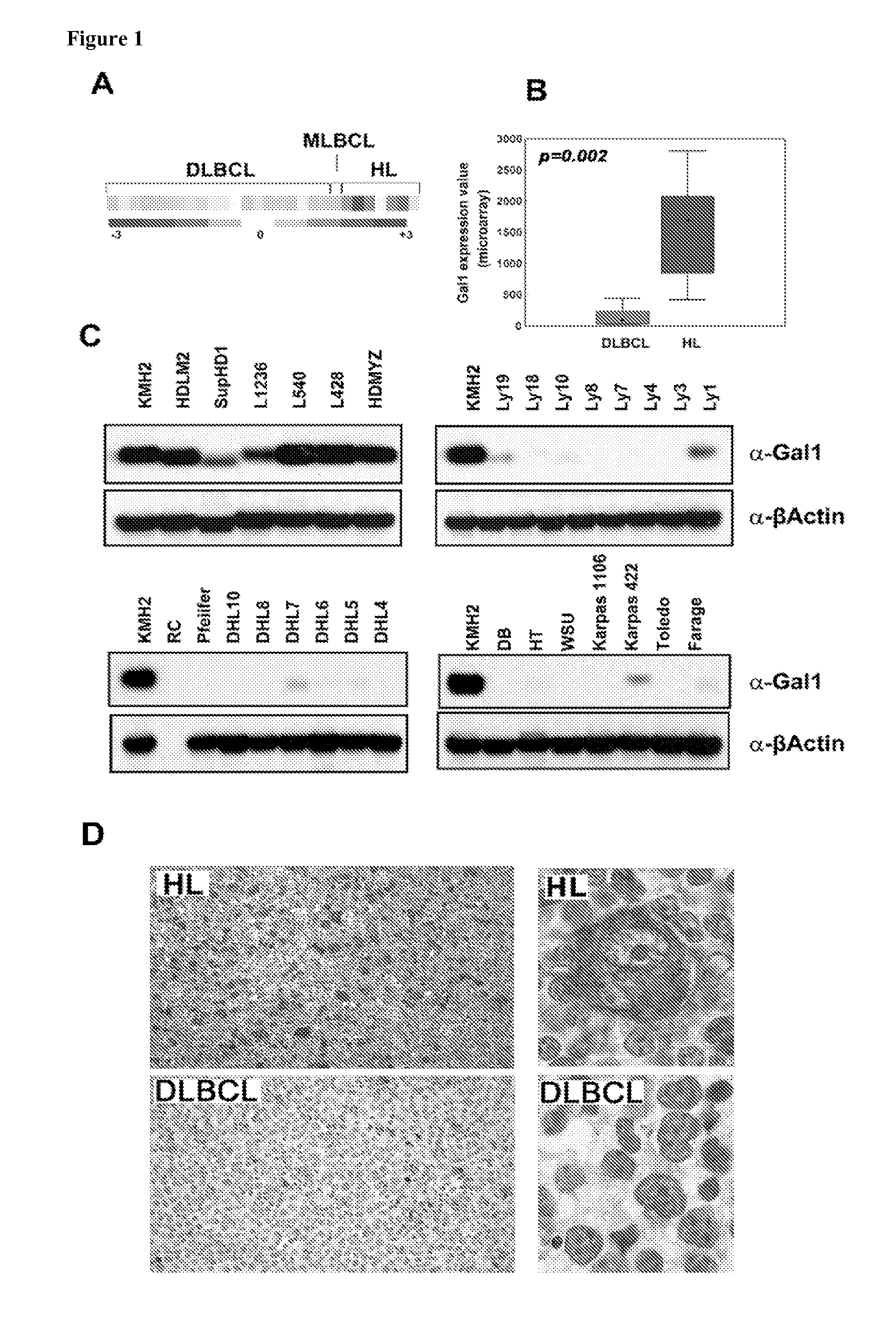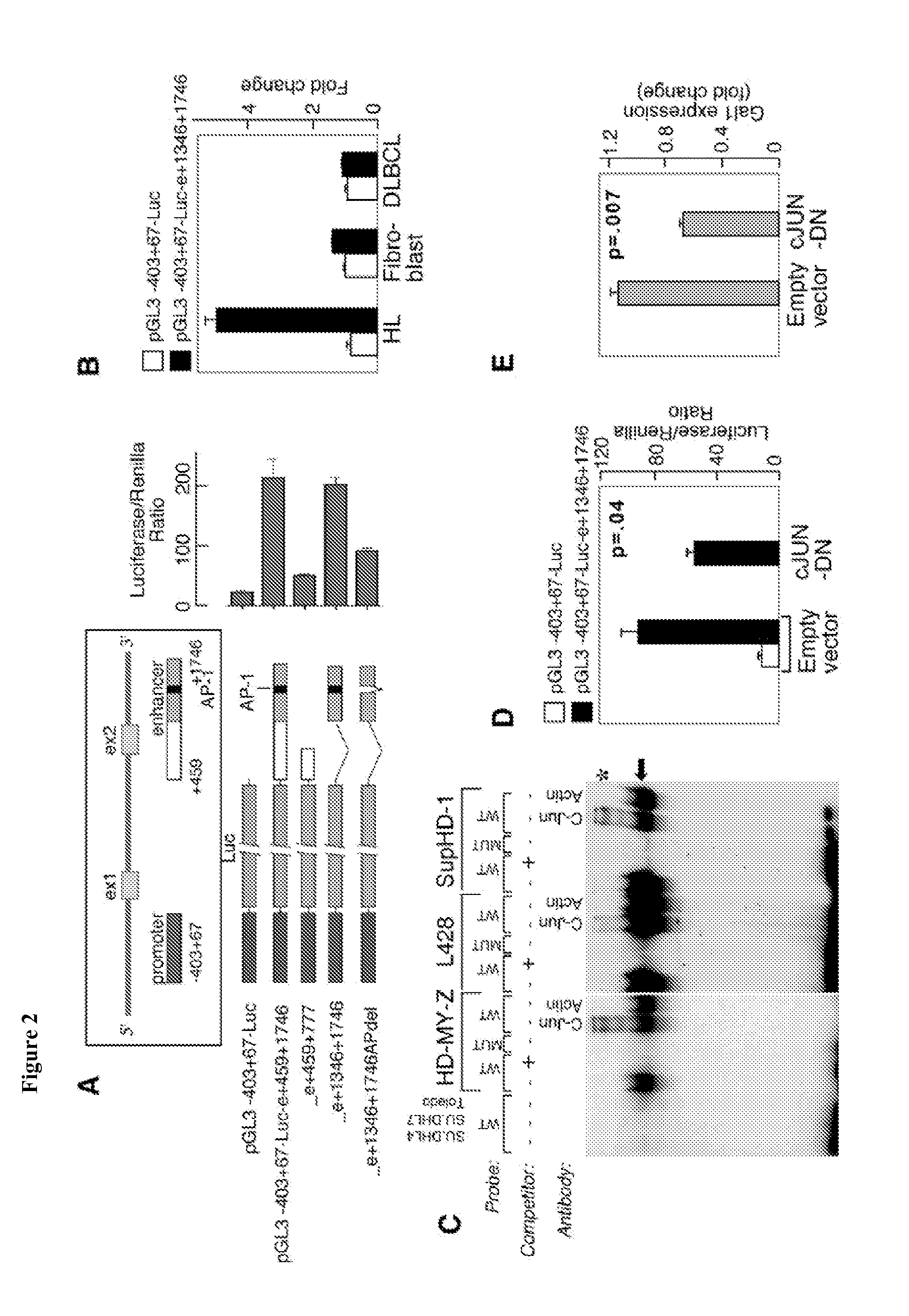Compositions, Kits, and Methods for the Diagnosis, Prognosis, and Monitoring of Immune Disorders Using Galectin-1
a technology of immune disorders and kits, applied in the field of compositions, kits, and methods for the diagnosis, prognosis, and monitoring of immune disorders using galectin1, can solve the problem of little evidence of an effective host anti-tumor immune response, and achieve the effect of good, low level of gal1 expression
- Summary
- Abstract
- Description
- Claims
- Application Information
AI Technical Summary
Benefits of technology
Problems solved by technology
Method used
Image
Examples
example 1
Materials and Methods Used in Examples 2-3
[0148]A. Cell Lines
[0149]Twenty-one DLBCL cell lines (Ly19, Ly18, Ly10, Ly8, Ly7, Ly4, Ly3, Ly1, Pleiffer, DHL10, DHL8, DHL7, DHL6, DHL5, DHL4, DB, HT WSU, Karpas 422, Toledo and Farage), 1 MLBCL cell line (Karpas 1106) and 7 cHL cell lines (KMH2, HDLM2, SupHD1, L1236, L540, L428, HD-MY-Z) were maintained as previously described (Mathas et al. (2002) Embo J 21, 4104-4113; Smith et al. (2005) Blood 105, 308-316). The cHL cell lines were previously demonstrated to have constitutive AP-1 activity and increased expression of c-JUN and JUNB (Mathas et al. (2002) Embo J 21, 4104-4113).
[0150]B. Identification of Genes Overexpressed in cHL Cell Lines by Gene Expression Profiling
[0151]Total RNAs from a panel of 21 diffuse large B-cell lymphoma (DLBCL) and 7 cHL cell lines were hybridized to U133A and B Affymetrix oligonucleotide microarrays, and the chips were scanned and data analyzed as previously described (Monti et al. (2005) Blood 105, 1851-1861...
example 2
Overexpression of Gal1 in cHL RS Cells
[0168]To identify novel cHL-specific T-cell inhibitory molecules, the gene expression profiles of a series of cHL and diffuse large B-cell lymphoma (DLBCL) and mediastinal LBCL (MLBCL) cell lines were compared. Gal1 transcripts were 4- to 29-fold more abundant in cHL cell lines than in the LBCL lines (p=0.002, FDR=0.014, FIGS. 1A and 1B). Gal1 protein expression was also uniformly high in cHL cell lines and low or undetectable in DLBCL and MLBCL lines by western blotting (FIG. 1C). Immunohistochemical staining of primary tumor sections revealed abundant Gal1 expression in cHL RS cells, whereas LBCLs were uniformly negative (FIG. 1D). In a series of primary lymphoid tumors, 10 / 10 cHLs were Gal1+ whereas 10 / 10 primary DLBCLs and 5 / 5 primary mediastinal LBCLs (MLBCLs) lacked Gal1 expression. Taken together, these data indicate that Gal1 is selectively upregulated in the RS cells of cHLs.
example 3
RS cell Gal1 Expression is Regulated by an AP1-Dependent Enhancer
[0169]To elucidate the mechanisms responsible for Gal1 overexpression in cHL RS cells, the Gal1 locus on chromosome 22 was analyzed. A candidate GC-rich regulatory element with a conserved putative AP1 binding site approximately 1.5 kb downstream of the Gal1 transcription start site (TSS) was identified. Since the AP1 components, cJUN and JUN-B are overexpressed in cHL and are critical for the pathogenesis of the disease (Mathas et al. (2002) EMBO J. 21: 4104-4113), it was asked whether AP1 mediates Gal1 expression in cHL. Luciferase vectors driven by the previously described Gal1 promoter (−403+67) were generated (Salvatore et al. (1998) FEBS Lett 421:152-8) and the putative Gal1 enhancer element (or mutated controls) and assessed associated luciferase activity in a cHL cell line (HD-MY-Z) known to have constitutive activation of AP1 (FIG. 2A) (Mathas et al. (2002) EMBO J. 21: 4104-4113). Constructs including the GC-r...
PUM
| Property | Measurement | Unit |
|---|---|---|
| Fraction | aaaaa | aaaaa |
| Time | aaaaa | aaaaa |
| Level | aaaaa | aaaaa |
Abstract
Description
Claims
Application Information
 Login to View More
Login to View More - R&D
- Intellectual Property
- Life Sciences
- Materials
- Tech Scout
- Unparalleled Data Quality
- Higher Quality Content
- 60% Fewer Hallucinations
Browse by: Latest US Patents, China's latest patents, Technical Efficacy Thesaurus, Application Domain, Technology Topic, Popular Technical Reports.
© 2025 PatSnap. All rights reserved.Legal|Privacy policy|Modern Slavery Act Transparency Statement|Sitemap|About US| Contact US: help@patsnap.com



